Welcome to the fifth installment of Braden’s and my remarkable 2024 Eastern Montana Odyssey. With this episode, and more than 1,000 miles under our belts, we round the halfway mark of our trip, approaching brand-new birding territory for us. Before that, however, we had some truly remarkable birding at past favorite birding sites. If you are enjoying these episodes, please share them with your birding friends and consider supporting our efforts by buying a *NEW* copy or two of one of Sneed’s books on the right.
After two fascinating, fulfilling days in Westby (see our last post), Braden and I were primed to tackle the next stage of our Eastern Montana safari. We’d already had some amazingly packed grassland birding experiences, so I have to admit I wasn’t as excited about Medicine Lake National Wildlife Refuge as I should have been. Part of that may be because last year, my pal Scott and I were turned back from the refuge by thick, slippery mud (aka “gumbo”). In any case, my bad attitude proved to be way off the mark, as Medicine Lake delivered one of our best grassland birding days ever.
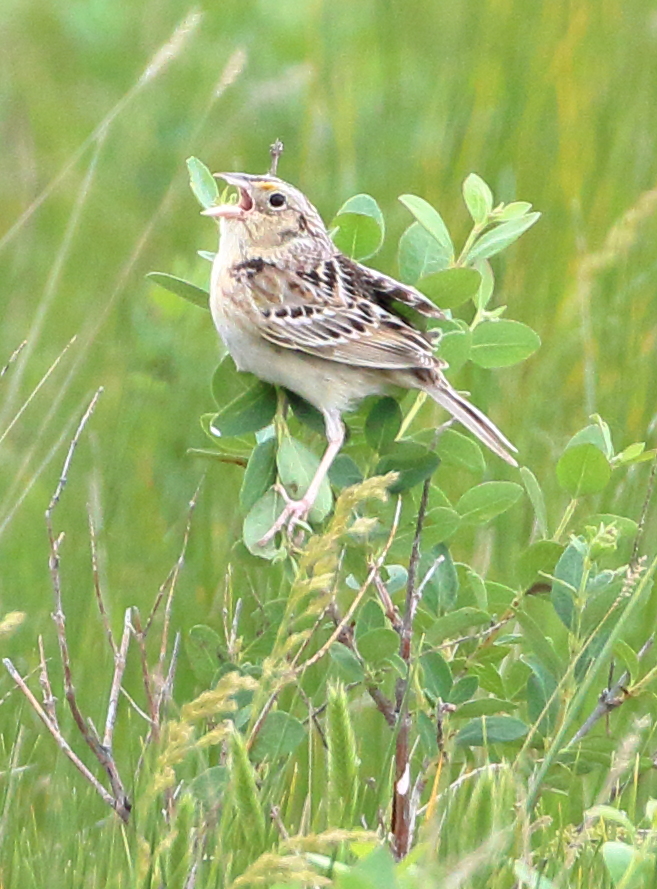
Our visit began promisingly when Braden IDed an Alder Flycatcher by its distinctive “free beer” call right near the (closed) visitor’s center. What unfolded afterward was nothing less than a full-on showcase of grassland birds. Over the next nine miles, Braden recorded approximately 75 Chestnut-collared Longspurs, 67 Grasshopper Sparrows, 9 Clay-colored Sparrows, 6 Baird’s Sparrows and much, much more. He detected many of these by song, of course, but longspurs and sparrows were literally flying up everywhere around our car in some sections. As Braden noted in our eBird list: “Ridiculous.”
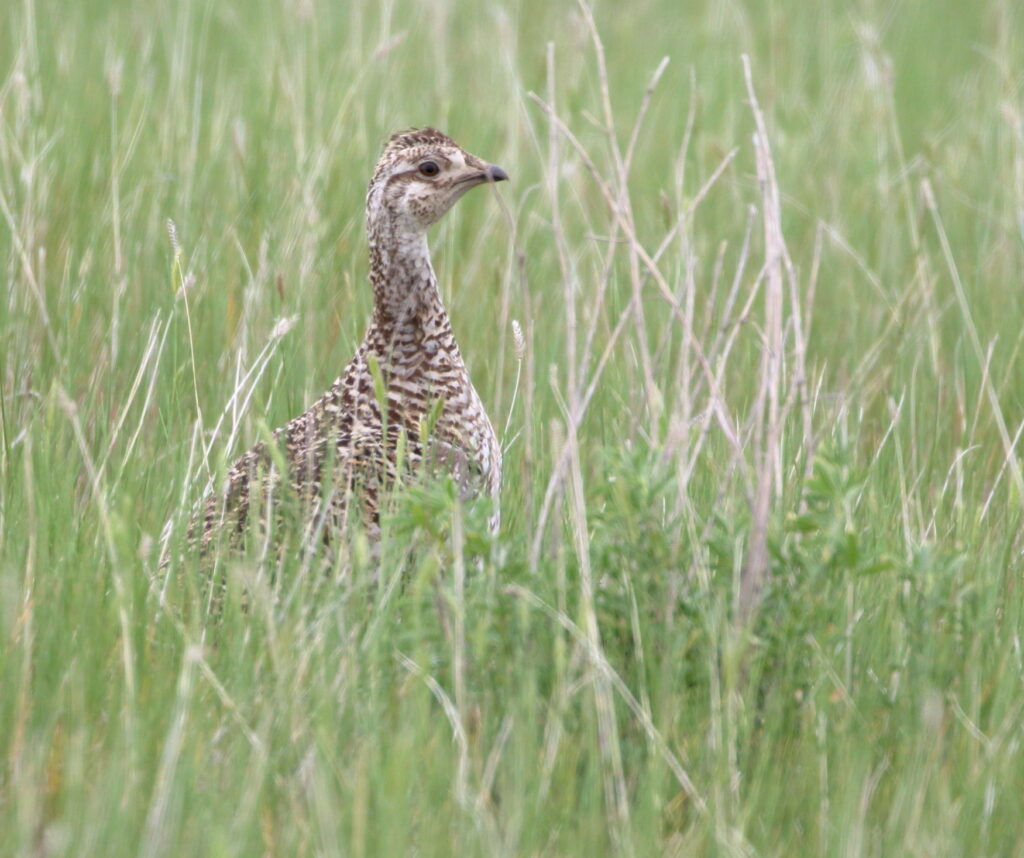
Not to be outdone, impressive numbers of waterfowl and game birds, including three Sharp-tailed Grouse, clamored to get on our eBird list. Surprisingly, so did a number of shorebirds. Where the road threaded two ponds, four White-rumped Sandpipers landed, giving us our closest looks of the entire trip. Here, we also saw eleven birds we desperately wanted to find—Red-necked Phalaropes. It’s lucky we did, too, since they would be the only RNPHs of our expedition.
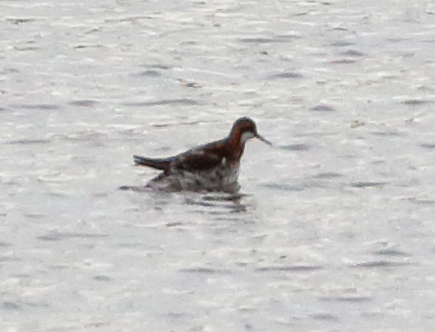
Our Medicine Lake checklist: https://ebird.org/checklist/S180177051
On our way down to Glendive, we stopped at Culbertson Bridge for a modest 21 species, and then turned right down a dirt road. “What are we doing here?” I asked Braden. “There are supposed to be Least Terns nesting on sandbars in the Missouri River,” he told me. Okay, I admit it, Least Terns were totally off my radar and, honestly, I’m not sure I realized they even nested in Montana. Sure enough, they do. There are five subspecies of Least Terns, and Montana’s belong to the “Interior” group. Unfortunately, this group is federally endangered due to its small population, habitat loss, and disturbance by recreational activities. Only about fifty are thought to live in Montana.
Several miles down the road, I pulled over at a spot overlooking several large sand islands in the river. We scanned them with our binoculars. Zippo. At that point, I was ready to move on, but Braden decided to put in the extra effort of setting up our spotting scope, even though he also thought we were out of luck.
“I see them!” he suddenly shouted.

Indeed, almost impossible to see with the naked eye or through binoculars, two were sitting there blending in perfectly with the sand. As we watched, we saw two more for a total of four—probably the rarest birds we would see on the entire trip! More excitement was yet to come.
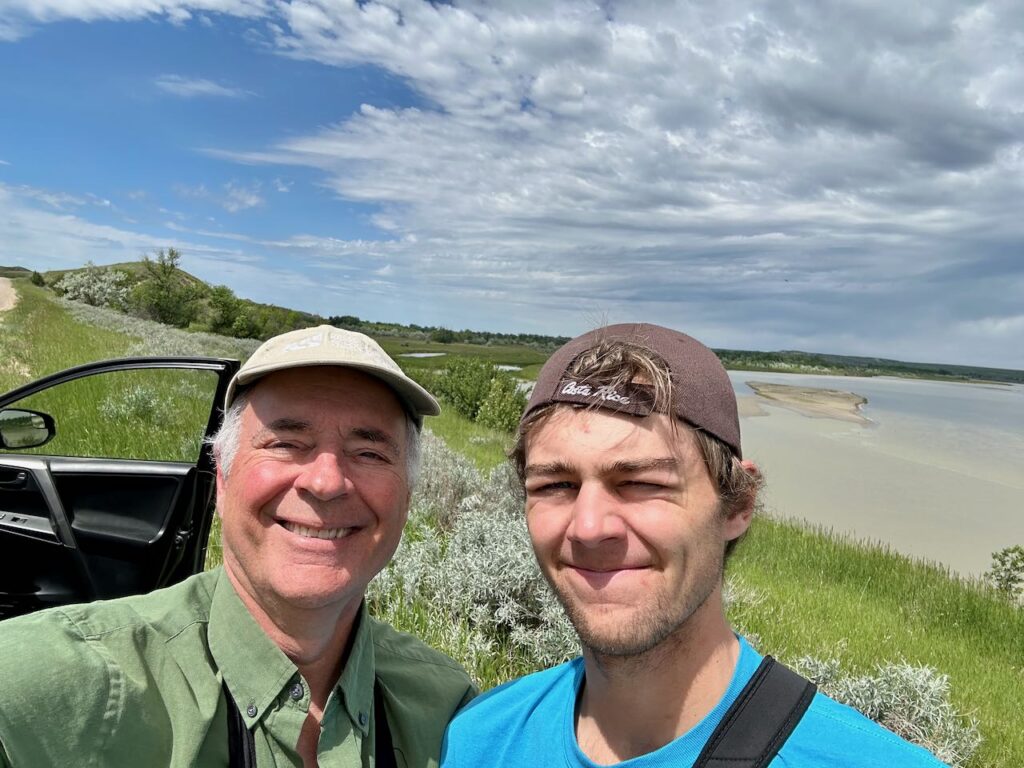
After a great late breakfast-for-lunch at Sunny’s diner in Sidney, we made it to Glendive, where we checked into a motel. After resting up a bit, we embarked on our final bird outing of this already-packed day—to Makoshika State Park.
Scott and I had a great time in Makoshika last year watching Field Sparrows and Rock Wrens, and as we entered the park, Braden and I also picked up both species. We had another agenda, however: finding Black-and-White Warblers. Predominantly an Eastern species, these handsome little birds are known to breed in Montana, but the only other one we’d ever seen was right here in Makoshika on a trip with Nick Ramsey in 2017. Dutifully, Braden and I hiked the same trail to see if we could find another one.

Nope. Worse, the hike wore me out after our extremely long day. Still, we had one more place to check—a campground way up on top of the hills with spectacular views of the surrounding badlands. We parked, got out, and began looking around. As usual, I was fairly skeptical of finding one, but then Braden’s ears perked up: “I think I hear one.”
We scrambled down a fairly steep slope until Braden stopped and looked up into a tree. “There it is!”
Elated, we both quickly got our binoculars on it, and I even took some crummy photos. After that, we just slowly followed this amazing, improbable little bird as it searched for insects on one tree, then another. By this time, the sun had started to sink low in the West, and standing there watching this bird created a sublime experience—one of those memorable moments that makes birding the best activity on earth.
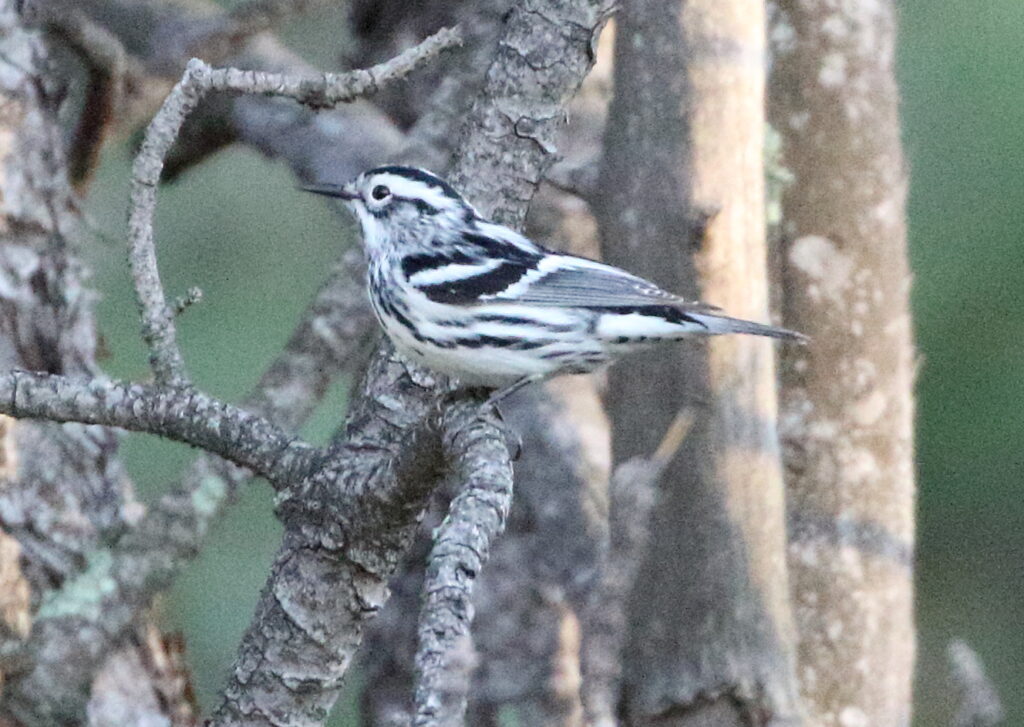

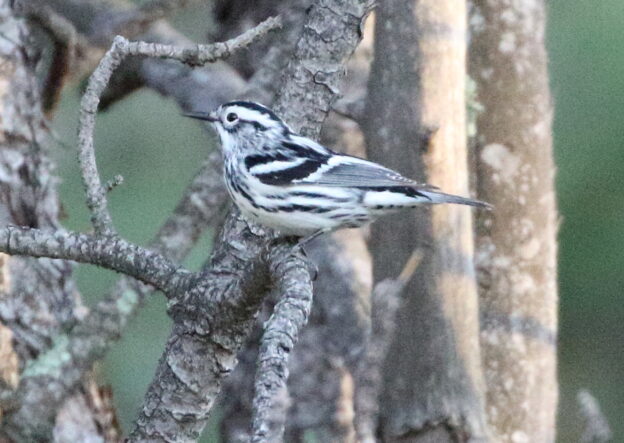
So many great finds. Congrats on the BWWA and the LETEs! This is some serious, dedicated birding.
Thank you, Roger. Braden and I kept waiting for a bad day of birding on the trip, but one was not to be found!
I’m curious what music you two listen to on these road trips. The Byrds, perhaps (didn’t they do “Tern Tern Tern?) ? The Sandpipers? The Eagles, I’ll bet! Flock of Seagulls…..any more? Oh, I nearly overlooked Counting Crows!!!
Ha! Actually, I don’t listen to music in the car much anymore. I don’t know if it’s because of my poor hearing or hearing aids, but it’s just too much sensory stimulation. I do listen to audio books, though 🙂